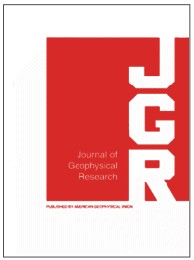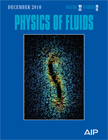The American Physical Society (APS) is a not-for-profit membership organization of professionals in physics and related disciplines, comprising nearly fifty divisions, sections, and other units. Its mission is the advancement and diffusion of knowledge of physics. The society publishes more than a dozen scientific journals, including the prestigious Physical Review and Physical Review Letters, and organizes more than twenty science meetings each year. APS is a member society of the American Institute of Physics. Since February 2015 the organization is led by chief executive officer Kate Kirby.
Physical Review is a peer-reviewed scientific journal established in 1893 by Edward Nichols. It publishes original research as well as scientific and literature reviews on all aspects of physics. It is published by the American Physical Society (APS). The journal is in its third series, and is split in several sub-journals each covering a particular field of physics. It has a sister journal, Physical Review Letters, which publishes shorter articles of broader interest.
Physical Review Letters (PRL), established in 1958, is a peer-reviewed, scientific journal that is published 52 times per year by the American Physical Society. As also confirmed by various measurement standards, which include the Journal Citation Reports impact factor and the journal h-index proposed by Google Scholar, many physicists and other scientists consider Physical Review Letters to be one of the most prestigious journals in the field of physics.

The American Institute of Physics (AIP) promotes science and the profession of physics, publishes physics journals, and produces publications for scientific and engineering societies. The AIP is made up of various member societies. Its corporate headquarters are at the American Center for Physics in College Park, Maryland, but the institute also has offices in Melville, New York, and Beijing.

Advances in Physics is a bimonthly scientific journal published by Taylor & Francis that was established in 1952. The journal is also issued as a supplement to the Philosophical Magazine. Peer review is determined on a case-by-case basis. The editors-in-chief are John Chalker and David Sherrington of Oxford University.
Reviews of Modern Physics is a quarterly peer-reviewed scientific journal published by the American Physical Society. It was established in 1929 and the current editor-in-chief is Michael Thoennessen. The journal publishes review articles, usually by established researchers, on all aspects of physics and related fields. The reviews are usually accessible to non-specialists and serve as introductory material to graduate students, which survey recent work, discuss key problems to be solved and provide perspectives toward the end. RMP is arguably one of the most, if not the most, prestigious, authoritative and highly impacting journals in the field of physics.

The Journal of Geophysical Research is a peer-reviewed scientific journal. It is the flagship journal of the American Geophysical Union. It contains original research on the physical, chemical, and biological processes that contribute to the understanding of the Earth, Sun, and solar system. It has seven sections: A, B, C (Oceans), D (Atmospheres), E (Planets), F, and G (Biogeosciences). All current and back issues are available online for subscribers.

Physical Review B: Condensed Matter and Materials Physics is a peer-reviewed, scientific journal, published by the American Physical Society (APS). The Editor of PRB is Laurens W. Molenkamp. It is part of the Physical Review family of journals. The current Editor in Chief is Michael Thoennessen. PRB currently publishes over 4500 papers a year, making it one of the largest physics journals in the world.

The Journal of Applied Physics is a peer-reviewed scientific journal with a focus on the physics of modern technology. The journal was originally established in 1931 under the name of Physics, and was published by the American Physical Society for its first 7 volumes. In January 1937, ownership was transferred to the American Institute of Physics "in line with the efforts of the American Physical Society to enhance the standing of physics as a profession". The journal's current editor-in-chief is André Anders. According to the Journal Citation Reports, the journal has a 2020 impact factor of 2.546.

Journal of the Physical Society of Japan (JPSJ) is a monthly, peer reviewed, scientific journal published by the Physical Society of Japan (JPS). It was first published in July 1946. The editor-in-chief was A. Kawabata until August 2010. The impact factor for JPSJ in 2017 is 1.485, according to Journal Citation Reports.
Inspec is a major indexing database of scientific and technical literature, published by the Institution of Engineering and Technology (IET), and formerly by the Institution of Electrical Engineers (IEE), one of the IET's forerunners.

Physics of Fluids is a monthly peer-reviewed scientific journal covering fluid dynamics, established by the American Institute of Physics in 1958, and is published by AIP Publishing. The journal focus is the dynamics of gases, liquids, and complex or multiphase fluids—and the journal contains original research resulting from theoretical, computational, and experimental studies.
The Proceedings of the USSR Academy of Sciences was a Soviet journal that was dedicated to publishing original, academic research papers in physics, mathematics, chemistry, geology, and biology. It was first published in 1933 and ended in 1992 with volume 322, issue 3.

ACS Nano is a monthly, peer-reviewed, scientific journal, first published in August 2007 by the American Chemical Society. The current editor in chief is Paul S. Weiss. The journal publishes original research articles, reviews, perspectives, interviews with distinguished researchers, and views on the future of nanoscience and nanotechnology.
Physics is an open access online publication containing commentaries on the best of the peer-reviewed research published in the journals of the American Physical Society. The editor-in-chief of Physics is Jessica Thomas. It highlights papers in Physical Review Letters and the Physical Review family of journals. The magazine was established in 2008.
Physical Review E is a peer-reviewed, scientific journal, published monthly by the American Physical Society. The main field of interest is collective phenomena of many-body systems. It is currently edited by Uwe C. Täuber. While original research content requires subscription, editorials, news, and other non-research content is openly accessible.
Physical Review A is a monthly peer-reviewed scientific journal published by the American Physical Society covering atomic, molecular, and optical physics and quantum information. The current Editor is Jan M. Rost.

Fay Ajzenberg-Selove was an American nuclear physicist. She was known for her experimental work in nuclear spectroscopy of light elements, and for her annual reviews of the energy levels of light atomic nuclei. She was a recipient of the 2007 National Medal of Science.
The Société Française de Physique (SFP), or the French Physical Society, is the main professional society of French physicists. It was founded in 1873 by Charles Joseph d'Almeida.

Physics Physique Физика, also known as various punctuations of Physics, Physique, Fizika, and as Physics for short, was a scientific journal published from 1964 through 1968. Founded by Philip Warren Anderson and Bernd T. Matthias, who were inspired by wide-circulation literary magazines like Harper's, the journal's original goal was to print papers of interest to scientists in all branches of physics. It is best known for publishing John Stewart Bell's paper on the result now known as Bell's theorem. Failing to attract sufficient interest as an unspecialized journal, Physics Physique Физика soon focused on solid-state physics before folding altogether in 1968. The four volumes of this journal were eventually made freely available online by the American Physical Society.









